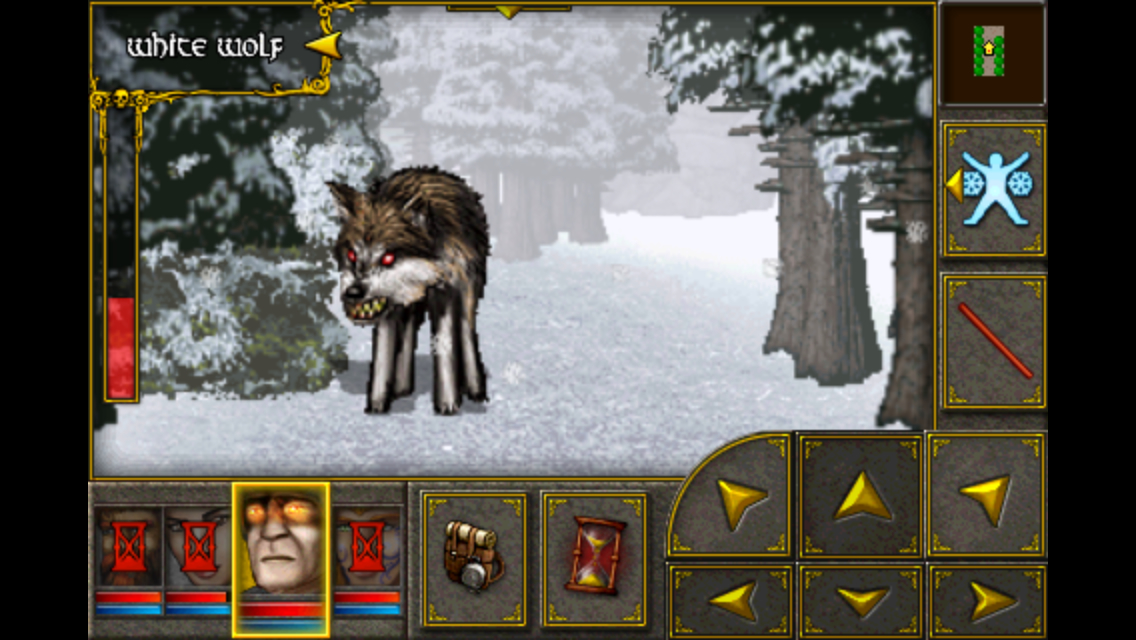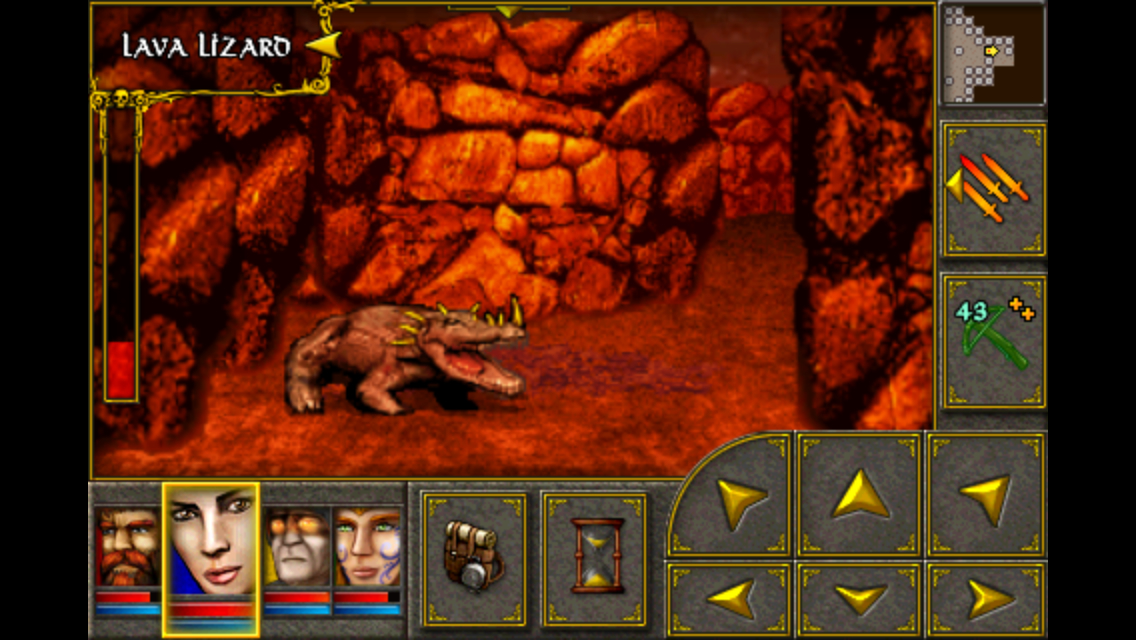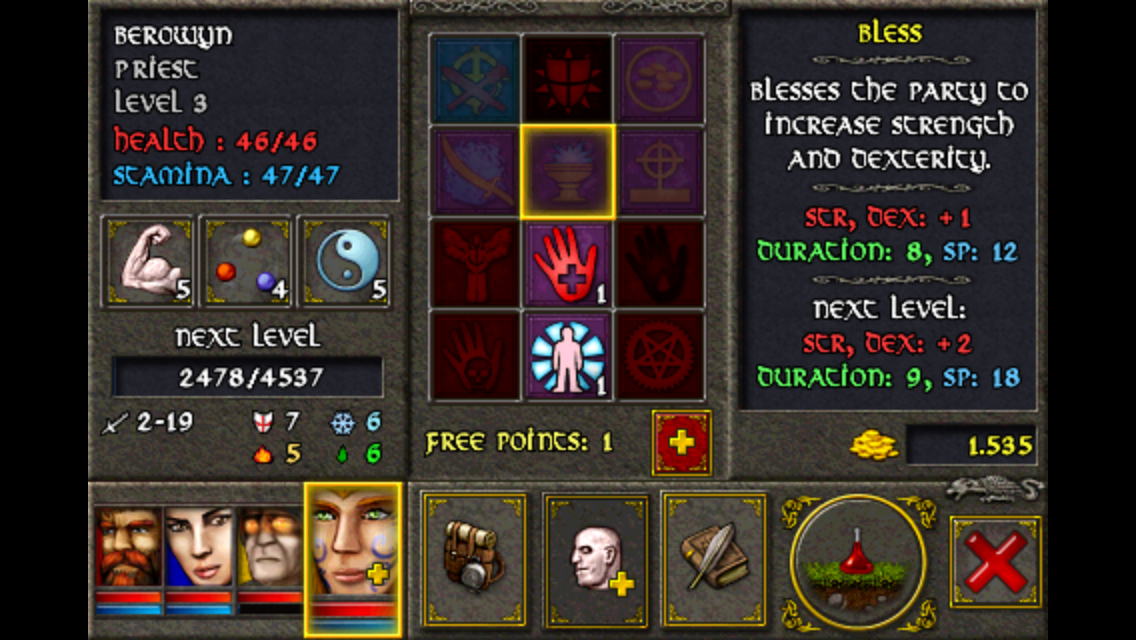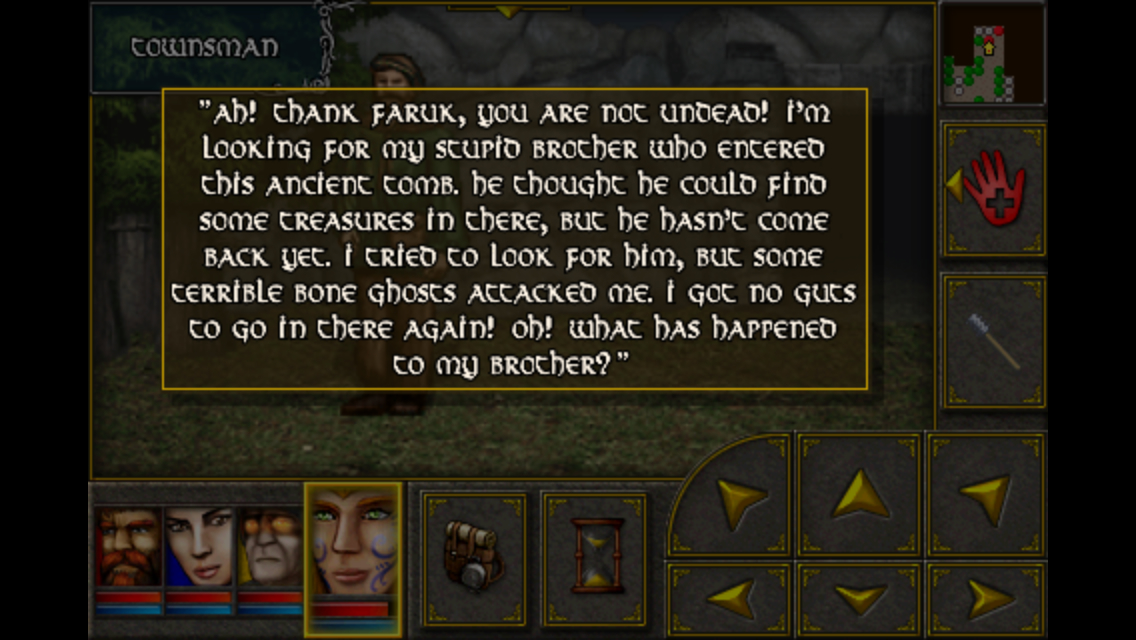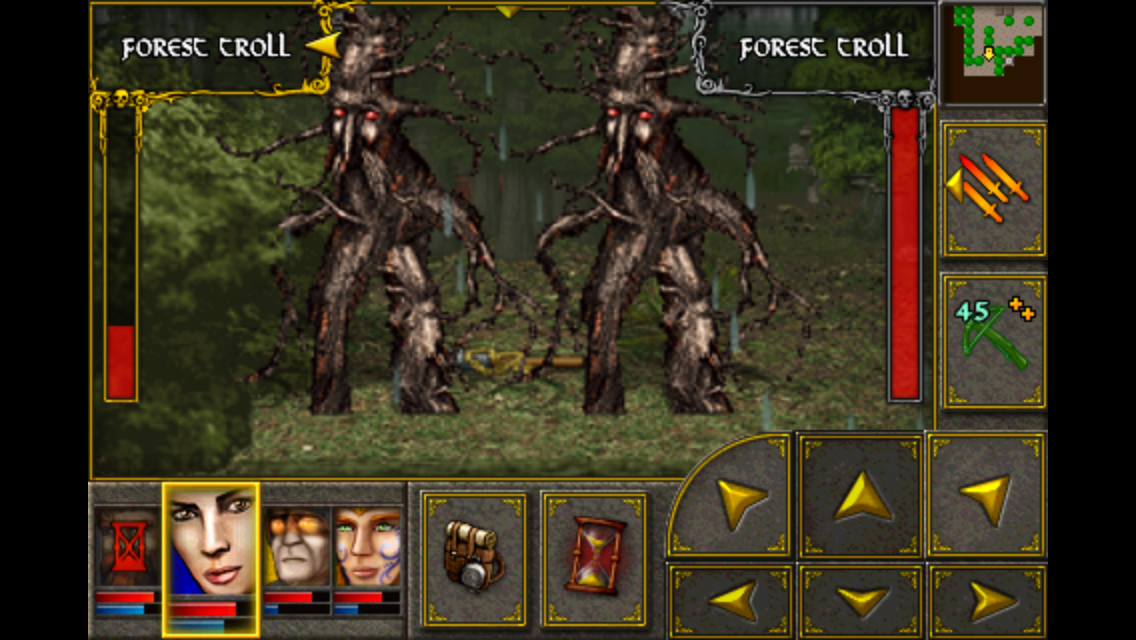 Hello, gentle readers, and welcome to the RPG Reload, the weekly feature where rat is on the menu at an alarmingly frequent rate. Each week, we take a look at an iOS RPG from years gone by. Some of them are originals, others are ports, some from this side of the world, others from that side. It doesn’t matter what kind of RPG it is, we still take a nice deep dive and check out how the game fares these days. I try to keep the offerings balanced between the many kinds of RPGs out there, and to aid me in that, I turn to you, the readers once per month. Simply make your suggestion known by commenting below, posting in the Official RPG Reload Club thread, or by tweeting me at @RPGReload, and your choice might be featured next month. This week’s game is one such selection. The next reader’s choice will be featured in the first week of May, so you’ve got plenty of time to make your voice heard.
Hello, gentle readers, and welcome to the RPG Reload, the weekly feature where rat is on the menu at an alarmingly frequent rate. Each week, we take a look at an iOS RPG from years gone by. Some of them are originals, others are ports, some from this side of the world, others from that side. It doesn’t matter what kind of RPG it is, we still take a nice deep dive and check out how the game fares these days. I try to keep the offerings balanced between the many kinds of RPGs out there, and to aid me in that, I turn to you, the readers once per month. Simply make your suggestion known by commenting below, posting in the Official RPG Reload Club thread, or by tweeting me at @RPGReload, and your choice might be featured next month. This week’s game is one such selection. The next reader’s choice will be featured in the first week of May, so you’ve got plenty of time to make your voice heard.
This week our topic is Undercroft (Free), another RPG from the earlier days of the App Store. It’s a first-person, turn-based game, not falling far from the Dungeon Master or Eye Of The Beholder trees. In that sense, it somewhat resembles previous subjects of this feature like The Quest Gold ($7.99) or QuestLord ($5.99), but it distinguishes itself in a few ways. Unlike those two games, you’re not traveling solo in this one but rather in a party. Additionally, Undercroft is a lot smaller and more linear than one might expect. There are several points of no return, which is odd for a game like this. Any quests not resolved before leaving an area will stay that way. I can see eyes twitching already. It sits between QuestLord and The Quest in complexity, being a bit more intimidating than the former but not nearly as sprawling and huge as the latter. It’s very much a meat and potatoes type of game, and in some ways, that makes it harder to write about than most.
Developed by Rake In Grass, Undercroft was released on the App Store in October of 2009. Though it met with a warm reception from RPG fans, the game didn’t do very well commercially, and in August of 2010, the game was pulled from the App Store. Rake In Grass felt they had to move on to other projects and realistically couldn’t support Undercroft with updates, expansions, or sequels. The game and all of its associated rights were transferred to Jagex Games Studio, most famous as the developer behind the browser-based MMORPG RuneScape. They put it back on the App Store mere weeks later in September of 2010, bafflingly setting the price to free with naught but a brief start-up ad telling players to check out RuneScape. Speculation ran rampant as to what their intentions were, with everything from IAP fears to hopes for sequels and expansions. After all that build-up, Jagex ended up doing very little with it. There were a couple of updates to fix a few bugs, but other than that, it seems like they just wanted to keep the game available for everyone.
You start the game by making your party. There are five different job classes, but you can only bring four members with you in total. No matter what, you’re leaving something behind. The classes aren’t anything particularly extraordinary by genre standards. You’ve got your warrior who specializes in physical attack and defense, with a number of weapon skills and abilities that shore up defenses or deal heavy damage. They’re a handy class in a game that doesn’t have many melee options, so you’ll probably want one along for meat shield purposes. Next, there’s the mage, who specializes in elemental magic. This class is useful for exploiting enemy weaknesses, but they’re pretty high maintenance. They take a lot of damage and if they run out of mana, they’re nearly useless. As you would expect, the priest is great for healing and defense, but you can also spec them out to deal absurd damage if you’d like. The summoner is a weird variation on the mage class. They can summon the undead to assist in battles, transform themselves into a powerful beast, and use lots of deadly offensive spells. Finally, occupying the rogue/ranger role is the assassin class. They’re great for hitting enemies at a distance and have a lot of extremely powerful skills.
After you’ve settled on your party, you can choose between two difficulty settings. The easy mode offers you a rough tour, with weakened enemies and more money all around. It’s not a complete pushover, and I think many players would be quite satisfied at this level, but more experienced players will want to go for the hard mode. It’s really tough, and you’ll have to use every dirty trick in the book to survive. Speaking of books, this game offers a very extensive set of in-game resources you can access if you need help. Not only are there very thorough instructions, but there’s also a useful guide and a complete walkthrough, if that’s your sort of thing. I feel like Undercroft does a good job of taking care of players at many different levels of skill, something that RPGs don’t always bother with.
The story starts like almost every other RPG. Your characters stop by a local tavern, make a ridiculous wager, have too much to drink, and end up chasing a local woman’s chickens across the whole town. Hm. Anyway, once you’ve sobered up, you’re tasked with finding the six chickens you made a sport of the night before. It’s a cute way to present a tutorial, and demonstrates the tone you can expect throughout the adventure. It’s silly, but it delivers it with such a straight face that it doesn’t feel out of place. At any rate, you’re not allowed to leave town until you’ve tracked down all six chickens, a task that will have looking for secret doors, throwing switches, exploring mini-dungeons, and so on. You’ll likely earn a level or two in the process, helping buff you up for the challenges to come.
In the early going, it feels like it’s going to be another non-linear open world game like others we’ve covered in this feature. Once you leave the town, there are a few different directions you can choose to go in, making it feel like there’s a big world to explore. This actually turns out to be a pretty clever illusion, but I’m not all that bothered by it. Linear games have value too, after all. The game basically consists of five reasonably-sized areas, each consisting of a few dungeons, a town or other source of amenities, and a hub connecting them all. By talking to people, you’ll receive a handful of quests, some of which are vital to continuing your progress, and some that are simply there to pad out your experience and resources. There’s usually a barrier preventing you from going on to the next major area until you’ve finished certain quests. Once you’ve done what you need to in order to remove that obstacle, you can move forward. The game will stop and warn you that you will not be able to return if you go forward, so check your quest lists and act appropriately.
RPGs broken into discrete stages are pretty rare, but one with a set-up like Undercroft‘s is even more unusual. It feels like it was designed from the beginning to be expanded in a very systematic way. It’s sad that it never was able to achieve that potential. As is, you’ll get about 10-15 hours out of the game, which is pretty respectable for an original iOS RPG, let alone a free one. The settings even cover an interesting variety of terrain types, from beautiful forests to red-hot caverns to snowy mountains. Unfortunately, the enemies aren’t quite as varied. You’ll be facing off against the same old foes again and again, just with higher stats and a new ability here and there. They’re not a clever bunch, either, often not moving towards you unless you’re right in front of them. The battles are decent enough, with lots of options depending on your party build. They drag on a little bit too long sometimes, especially if you’re playing on the higher difficulty, an aspect that sometimes makes the game feel repetitive.
The exploration side of things ramps up nicely. The early dungeons are quite simple to navigate, but they increase in size as you go. They never get terribly big, but when combined with the puzzles, they’re certainly enough for a game where you can’t rest or camp. The game features an automap that assists greatly, filling out walls, paths, and important points of interest. I’m a bit mixed on the puzzles in Undercroft, by the way. Switch puzzles are fine if not terribly imaginative, but I’m really not a fan of pure trial and error. Too many sequences in this game involve testing switches or trying to choose the right path through a labyrinth without much in the way of hints to help you. You just have to try things one way, and if it doesn’t work, try it another way. There are also puzzles where you’ll have to use the correct item on something. These are sometimes confusing until you actually have the item in hand, at which point it’s usually pretty easy to make the connection.
All in all, it’s a decent if not terribly exciting game. Like I said near the beginning, it’s a meat and potatoes RPG. There are a couple of absolutely maddening puzzles that may tempt you to peek at the walkthrough. Certain dungeons or enemy encounters can take some serious planning, careful decision-making, and a bit of luck. On the whole, though, Undercroft goes down pretty smoothly, even if it’s not all that memorable. The way it’s structured lends itself well to sitting down, clearing out an area, and then calling it a night once you’ve put it behind you for good. That’s probably the best way to go about it, as it keeps you from forgetting details about what you’re doing or where you’re going, but keeps things from getting too rote. You can save at any time, so you could theoretically play this in smaller bites, but I can’t imagine it being terribly enjoyable that way.
For such an old game, it actually holds up pretty well today from a technical standpoint. Sure, it lacks support for iPads, retina screens, larger iPhone screen sizes, and just about anything else you could imagine, but it works without any crashes or graphical issues. It’s also a positively tiny game in terms of memory, which is always a plus. The UI is serviceable enough, though the inventory management system is pretty bad. That’s often an issue with games that have a ton of loot and item types, and Undercroft certainly has bucketfuls of both. At this point, I can’t imagine the game will get any further updates unless something completely breaks. Even then, it’s hard to say how much Jagex is going to invest in a game that produces no revenue. Sequels and expansions seem even less likely. We’ll just have to enjoy Undercroft for what it is: a well-made homage to PC classics and one of too many games that couldn’t quite make a go of things financially. I enjoyed playing it again, though I’m not sure if I’ll ever want to go a third time.
That’s just my take on Undercroft, though. What do you think? Leave your comments down below, post in the Official RPG Reload Club thread, or tweet me at @RPGReload. Don’t forget to vote for the next reader’s choice while you’re at it. As for me, I’ll be back next week with another RPG from the past, and there should be a new episode of the RPG Reload Podcast going up early next week, too. The topic of the latest episode is Shining Force ($0.99), and Eric Ford and I had a great time talking about it. I hope you enjoy it. Thanks for reading!
Next Week’s Reload Hint: This action-RPG is full of violets.
